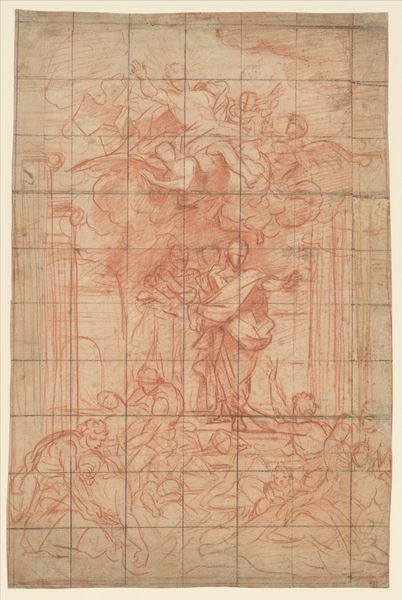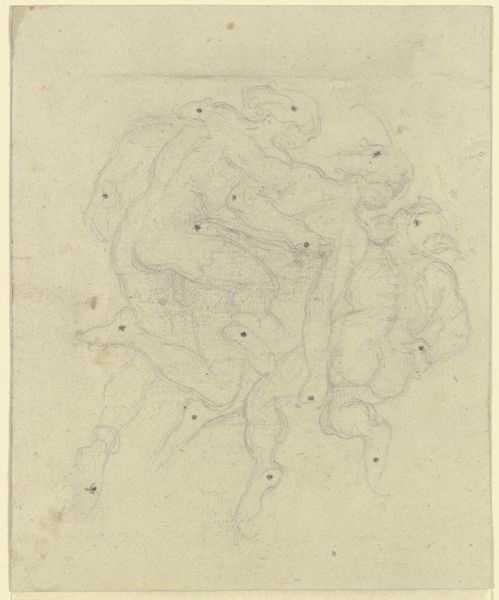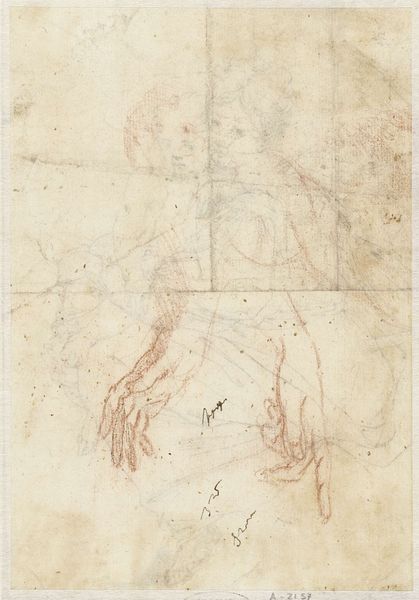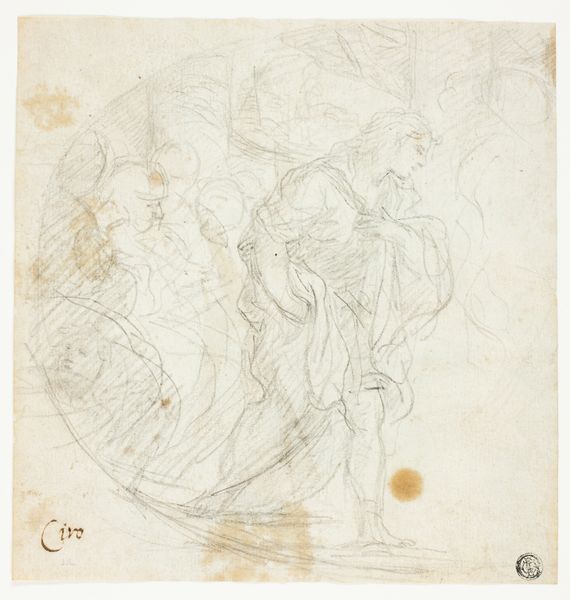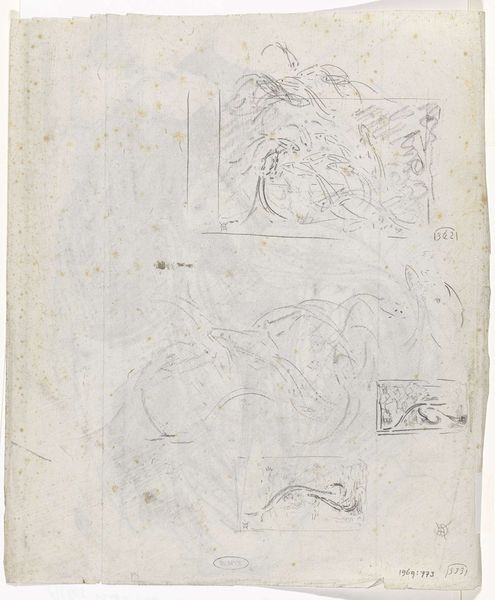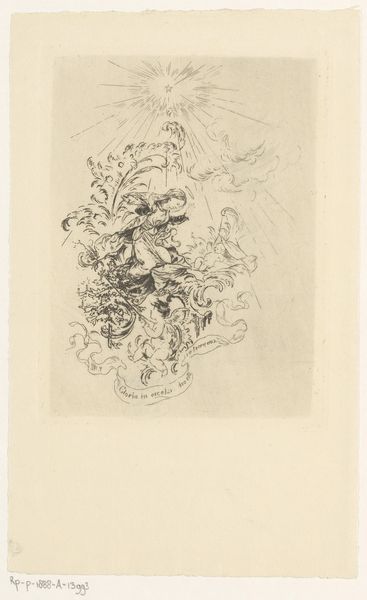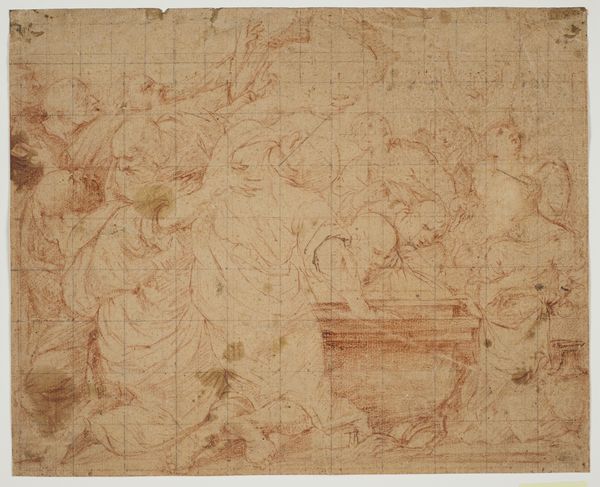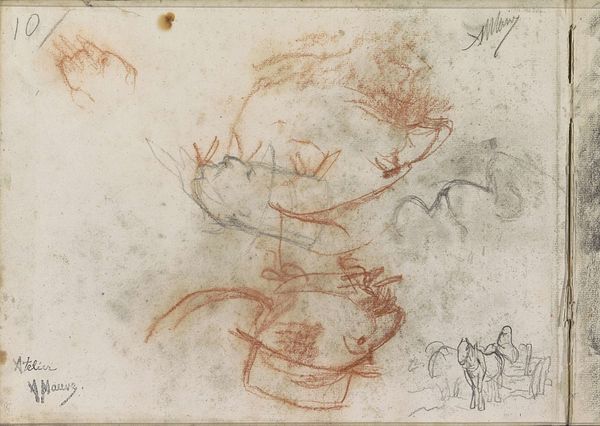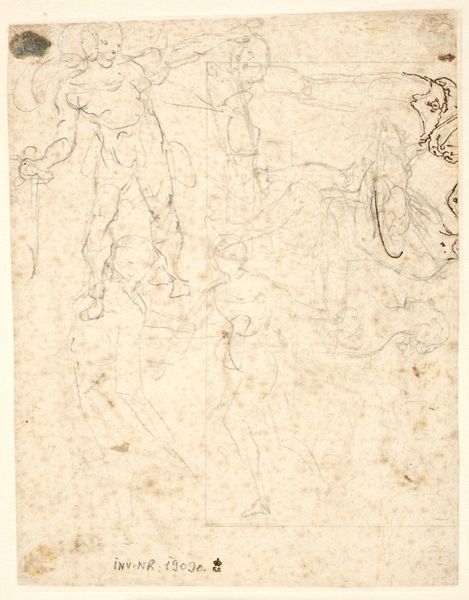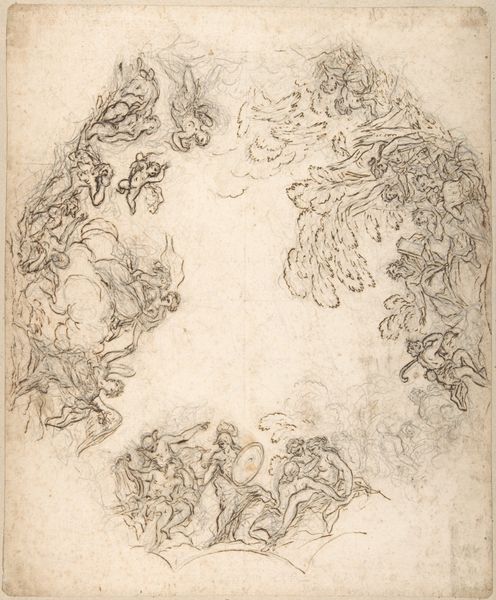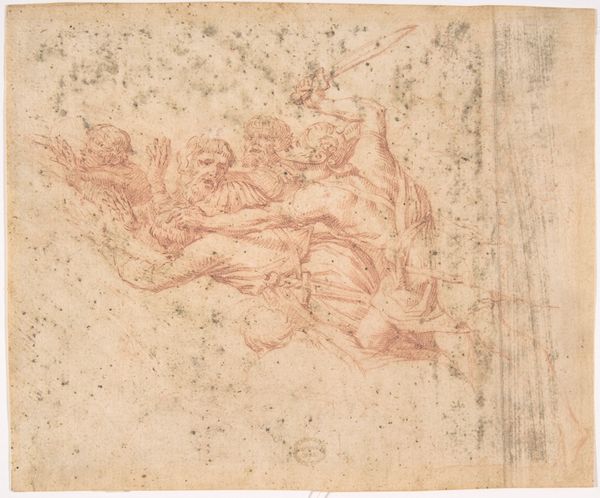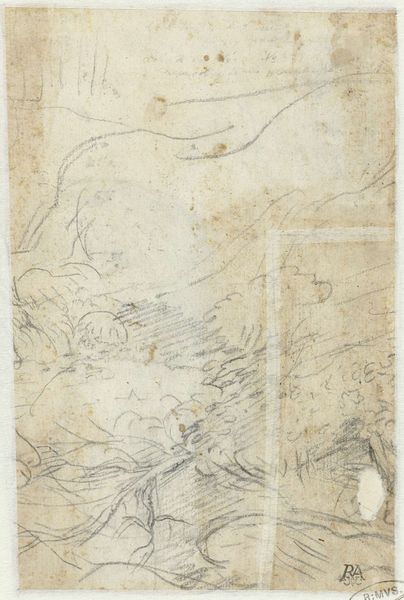
drawing, print
#
drawing
#
allegory
#
baroque
# print
#
figuration
Dimensions: 6 7/16 x 5 11/16 in. (16.3 x 14.5 cm)
Copyright: Public Domain
Editor: Here we have Antoine Coypel's "Zephyr and Flora," dating somewhere between 1670 and 1725. It's a red chalk drawing, almost like a print because of the grid. It feels classical, almost… I'm wondering what stands out to you? Curator: Well, look closely at that grid. It's not just an aesthetic choice; it’s a tool, a means of mass production and reproduction. Coypel wasn't just creating a unique image. This grid hints at the commodification of art, doesn’t it? Think about the engravers who translated paintings to print. What did their labor look like? Editor: So you’re saying the drawing’s material presence—the chalk, the paper, even the grid—points to its purpose? How so? Curator: Exactly. The subject, Zephyr and Flora, represents Spring and abundance, almost… consumerist ideals in the royal court. But the drawing, due to the grid lines, highlights the *process* through which that ideology was circulated and consumed. It's no longer just an allegorical scene; it's part of a system. Does it change your initial response to this work? Editor: It definitely makes me think about how art, even seemingly romantic depictions, is always embedded in specific economic and social systems. Curator: Precisely! Art never exists in a vacuum, does it? Even this seemingly delicate drawing bears the marks of production, consumption, and the division of labor. Editor: That's given me a lot to consider about art making and circulation. Curator: Same here, it's interesting how material means, give us access to contexts we often forget.
Comments
No comments
Be the first to comment and join the conversation on the ultimate creative platform.
